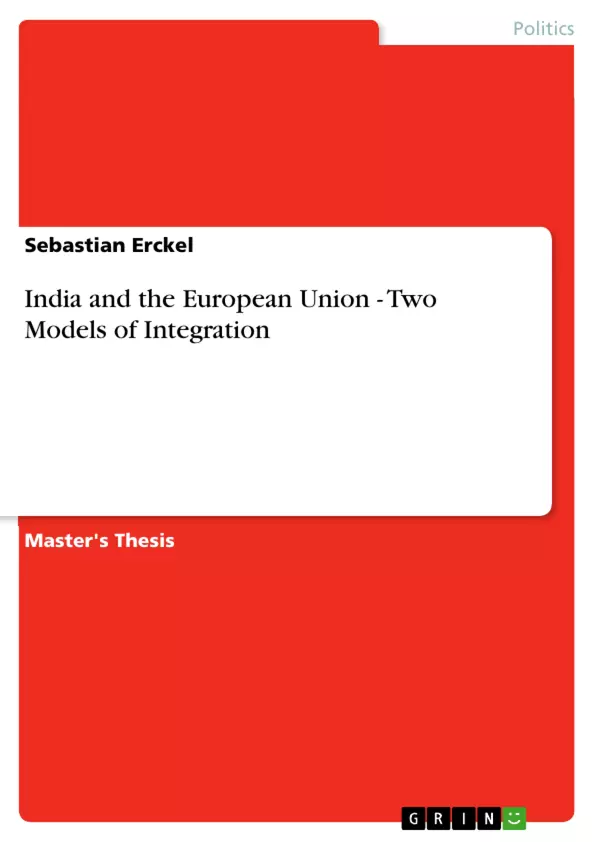The late 20th century has witnessed a confusing and seemingly also threatening diversification of world politics, especially after the end of the Cold War and the collapse of the Soviet Union. While shortly after these events the victory of democracy was celebrated or even the “end of history” proclaimed (Fukuyama), it soon became clear that these rather optimistic assumptions could not be sustained. Huntington (1993) predicted conflicts along cultural lines and Alvin and Heidi Toffler (1994) assumed these conflicts would take the form of asymmetric warfare leading to the phenomenon of “failed states” which, according to Chomsky (2006), present a threat to democracy. Asymmetric warfare, cultural conflicts and failed states have all already left their impact on the young 21st century.
Yet the same period of time has also seen unprecedented global integration, in the economy, but in terms of human personal exchange as well, largely fueled by new communication technologies. However, the emerging “global village” seems to bear more characteristics of a Hobbesian state of nature than of a global civilization. Furthermore, as there are an ever increasing number of issues which can obviously only be addressed on a transnational basis, it becomes necessary to supplement global economic integration with an adequate political framework.
Both India and the European Union are prime examples of political integration, the former for national and the latter for regional integration. However, one of the presumptions of this dissertation is that in both cases complementary forms of political integration can be identified: while in India national integration necessitated regional integration, the European Union may well be on its way toward a European super- state.
The term “model” has two connotations: (1) it describes a distinguishable set of characteristics, and (2) it contains a (usually positive) qualitative aspect, something that could/ should be followed or imitated. While in the case of India and the European Union the first connotation is rather obvious as two distinctive types of integration can be identified, this dissertation not only attempts to analyse these different types but also to verify whether the second connotation can be applied or not. As the hypothesis is that in both types elements of the other will be identifiable, the focus rests upon discovering certain patterns of integration while at the same time appreciating the differences.
Inhaltsverzeichnis (Table of Contents)
- Preface and Acknowledgements
- Introduction
- A Theoretical Framework of Political Integration
- Nations, Nationbuilding and National Integration
- Regional Integration: Functionalism, Neofuntionalism and Intergovernmentalism
- International Integration
- Historical Background
- The National Integration of India
- Geographical, Historical and Cultural Determinants of the Subcontinent
- Nationalism and Freedom Movement
- Resisting India- the Mizoram Experience
- The Project of Europe
- From the Treaty of Westphalia to the Modern European Nation- State
- The National Integration of India
- Structures of Integration- Federalism
- The Transformation of Indian Federalism
- Regionalism in India
- Tamil Nadu
- Gorkhaland
- Europe- Union, Federation or Confederacy?
- Policies of Integration
- Multiculturalism
- Theories of Multiculturalism
- Multiculturalism in India- Constitutional Provisions and Practical Application
- Hindu Cultural Nationalism and the Quest for a Uniform Civil Code
- Multiculturalism in the European Union
- Secularism
- Western and Eastern Traditions of Secularism
- The Secularism Debate in India
- The Resurgence of an Occidental Christian Identity - the Case of Turkey's Admission into the European Union
- Multiculturalism
Zielsetzung und Themenschwerpunkte (Objectives and Key Themes)
This thesis aims to provide a comparative analysis of the integration processes in India and the European Union. The work examines the theoretical frameworks, historical backgrounds, structural mechanisms, and policies of integration in both entities, focusing on the key themes of nation-building, regionalism, federalism, multiculturalism, and secularism.- Comparing and contrasting models of integration in India and the European Union
- Examining the theoretical frameworks of political integration, including functionalism, neofunctionalism, and intergovernmentalism
- Analyzing the historical development of both entities, focusing on national integration processes and the role of regionalism
- Assessing the role of federalism in structuring and managing integration processes
- Exploring the interplay between multiculturalism and secularism as crucial elements of integration policy
Zusammenfassung der Kapitel (Chapter Summaries)
The thesis begins by outlining a theoretical framework for understanding political integration, analyzing key concepts like nation-building, regional integration, and international integration. It then examines the historical context of both India and the European Union, exploring the unique challenges and opportunities each faced in its journey toward integration. The work delves into the structural features of integration, particularly the role of federalism, with a specific focus on the evolution of Indian federalism and the emergence of regionalism. It analyzes the diverse policies of integration adopted by both entities, particularly examining multiculturalism and secularism as key elements in fostering unity within diversity.Schlüsselwörter (Keywords)
This thesis focuses on key concepts like political integration, nation-building, regionalism, federalism, multiculturalism, and secularism, examining their influence on the integration processes in India and the European Union. The study delves into historical and theoretical perspectives, comparing and contrasting the approaches taken by these two entities, highlighting their successes, challenges, and ongoing debates.- Arbeit zitieren
- Sebastian Erckel (Autor:in), 2009, India and the European Union - Two Models of Integration, München, GRIN Verlag, https://www.grin.com/document/178802



